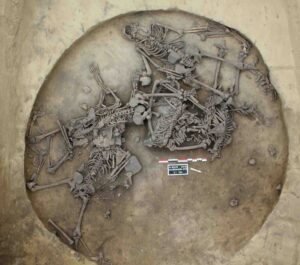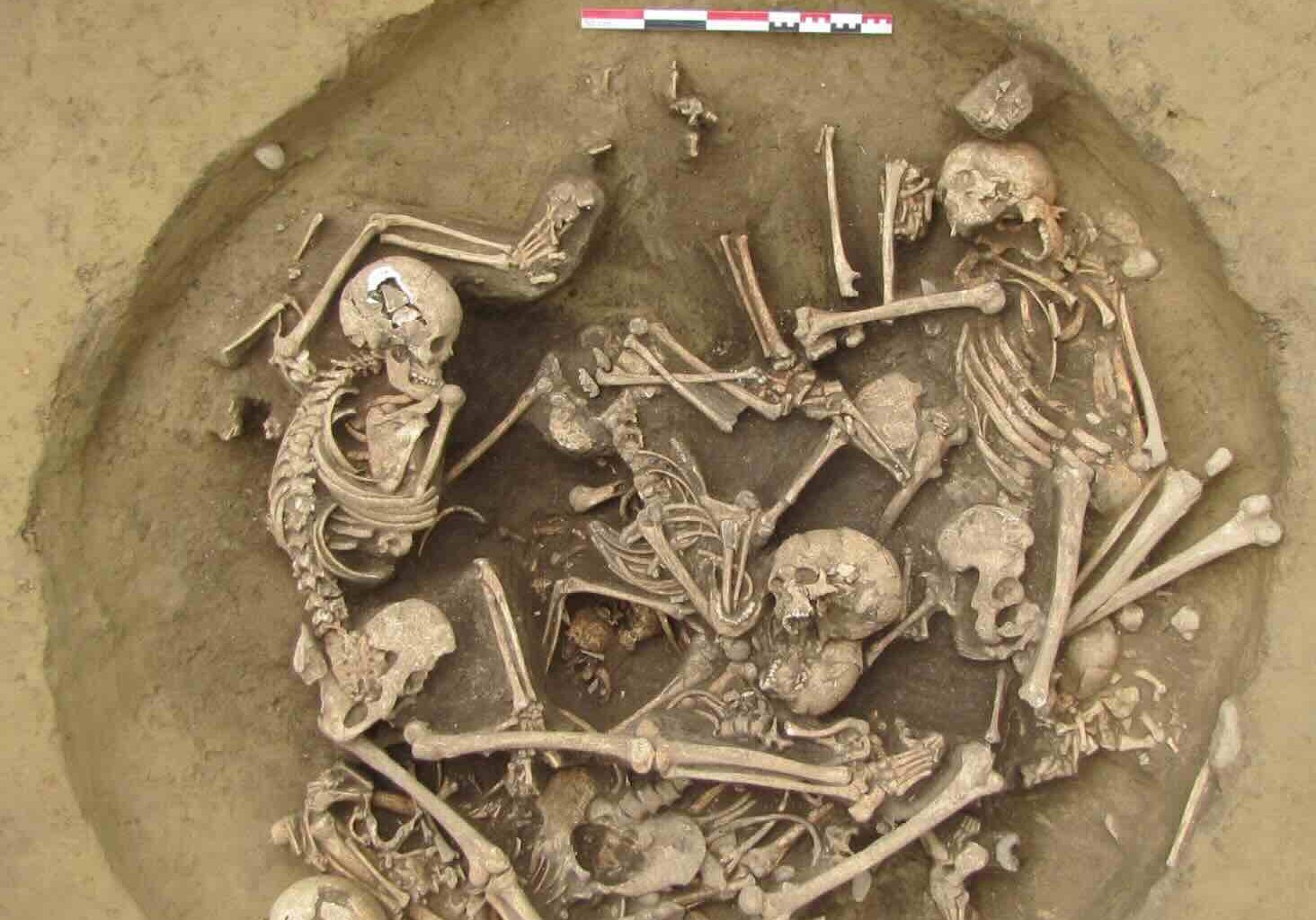Archaeologists working in France have discovered new evidence for the antiquity of human brutality in war, discovering Neolithic prisoner abuse dating back to between 4300 and 4150 BCE.
Described in a new paper in Science Advances, the sites at the center of the study were two burial pits in Achenheim and Bergheim, located in northwest France. The signs of brutality discovered in some of the human remains align with other archaeological evidence for military invasions between communities in the Upper Rhine Valley at the time.
The Violence of Neolithic Europe
Life in ancient Europe was harsh, and often made so by humans themselves. Previous studies have revealed massacres of entire communities, raids aimed at abducting young women, and even evidence of ritualized killings or mutilation, practices considered rare among the relatively egalitarian societies of the region.
Beyond isolated acts of violence, the Upper Rhine Valley also shows signs of major cultural upheaval, suggesting a broader war of conquest. The area’s original inhabitants followed Bruebach-Oberbergen cultural traditions, but sometime between 4295 and 4165 BCE, these were supplanted by Western Bischheim practices brought by groups from the Paris Basin.
 A Neolithic burial pit at Achenheim displays the disarray and indignity of prisoner interment. Credit: P. Lefranc
A Neolithic burial pit at Achenheim displays the disarray and indignity of prisoner interment. Credit: P. Lefranc
Investigating the Burial Pits
Until recently, the identities of those buried in Achenheim and Bergheim were unclear. Researchers sought to determine whether the dead were locals or foreigners, and whether they showed evidence of being prisoners of war. Their analysis included 82 sets of remains, yielding a wide spectrum of findings.
In each location, one pit contained clear victims of violence, including individuals with severed upper limbs and unhealed skull fractures. Other pits, by contrast, showed orderly burials with no signs of violent injury, suggesting natural deaths among local residents. Isotopic analysis confirmed significant differences between those with violent injuries and those without, leading researchers to conclude that the violent burials contained members of rival groups. Intriguingly, these victims appeared to come not from a single enemy community, but from several distinct groups.
The Meaning of Violence
“It is probable that the identities of these victims can be attributed to socially remote, nonlocal enemies that became trophies or captives during battles or raids and their captors may have considered that as not properly ‘human’ and hence warranting such treatment,” the authors write.
While it is certain that those dying violently were outsiders, some elements remain unclear. One pit was full of human skeletons, arranged haphazardly, suggesting an intentionally undignified burial, but displayed no overt signs of brutality, indicating a violent, yet more restrained cause of death such as strangulation.
However, one lone human skeleton in the pit showed signs of severe overkill, with unhealed wounds across several bones, including a complete fracture and a missing segment of limb. The reason for the disparity in the level of violence viewed among victims in the same pit was unclear.
The study’s authors propose that the violence may indicate that it carried supernatural meaning, with captives sacrificed to gain divine favor in war. On a practical level, they also suggest it may have been rooted in the belief that an enemy must be utterly destroyed to prevent future retaliation. While the exact motivations remain uncertain, the findings make clear that acts resembling modern “war crimes” were already taking place in Neolithic Europe.
The paper, “Multi-isotope biographies and identities of victims of martial victory celebrations in Neolithic Europe,” appeared in Science Advances on August 20, 2025.
Ryan Whalen covers science and technology for The Debrief. He holds an MA in History and a Master of Library and Information Science with a certificate in Data Science. He can be contacted at ryan@thedebrief.org, and follow him on Twitter @mdntwvlf.

